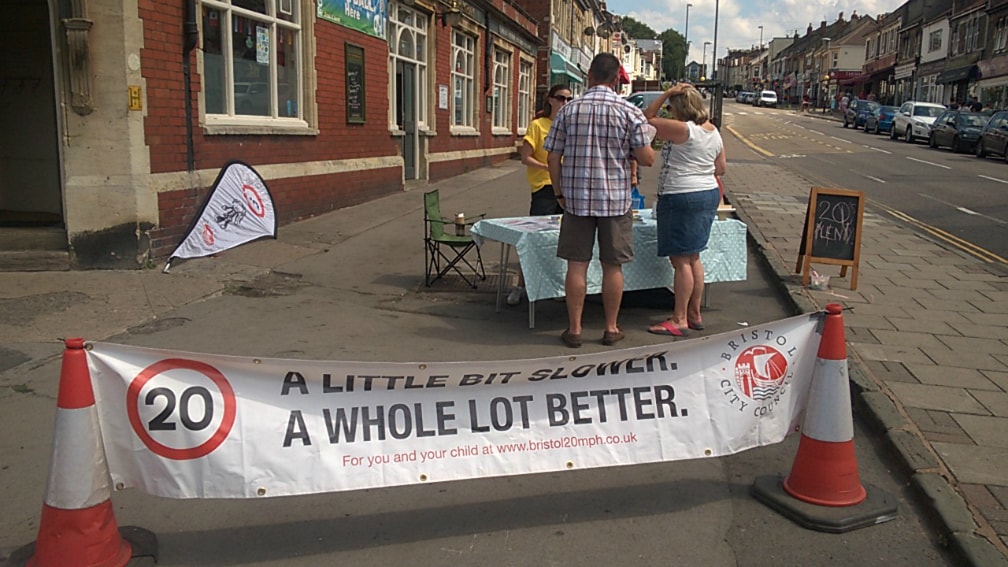
KJIPUKTUK (Halifax) – There’s no debate that slower speeds dramatically reduce the risk of serious accidents and deaths on our roads. And slower speeds don’t have much of an impact on journey time either – just a better, smoother ride and less pollution. So after a summer of carnage and with Halifax ranking as the community with the highest collision rate in Canada for several years running, everyone should be keen to reduce speed limits.
On my last visit to the UK this year I did not pass through many cities, towns or villages that did not have extensive 20mph (32kph) speed limits, as well as physical traffic calming measures on residential roads and around schools such as speed bumps.
North America is rapidly following Europe’s leadership – New York and Boston lowered their default speed limit to 25mph, with Boston already looking to drop speeds still further to 20mph (32kph). In Canada, Toronto has both 40 and 30kph limits in place on residential streets, and Calgary councillors just voted for either a 40 or 30kph speed limit. Others will surely follow soon.
Here, the Province also cautiously back lower speed limits. They completed some pilot tests of 40kph zones in 2016 and agreed lower slower speed limits are needed in some neighbourhoods, with the key proviso that road design, not posted speed limits, have the most influence on speed, a point which Halifax has belatedly noted and is addressing. Local traffic authorities were invited to submit speed limit reductions requests for local areas to the Province for approval.
Two years later, the Province has confirmed it has not received a single local speed limit decrease request from HRM. Not one. So what’s the hold up?
In April 2017 Regional Council approved a request to the Province to reduce speeds. It was a “blanket” request that they should be permitted to post 40kph speed limits on all roads under HRM’s jurisdiction. Staff pointed out that this request would not meet criteria provided by the Province on how speed limit reduction requests should be made. As predicted, the request was refused because it was not specific to a neighbourhood or local area, and was not supported with engineering data.
So we have a stalemate over speed. HRM insist on a default lower speed limit which they can apply everywhere they see fit. The Province has not changed the minimum legal speed limit and may not review it until the new proposed Traffic Safety Act. Even then, it may decide that the minimum legal speed of 50kph should be maintained with local area exceptions to be approved by the Province.
Meanwhile parents live in fear of traffic moving at 50kph along residential roads. This is no small issue: In 2014, Child Safety link identified pedestrian collisions as the leading cause of death for children aged 14 years or younger in Atlantic Canada.
HRM could submit localized speed reduction requests to the Province, which would allow some of our accident hot spots to become safer. But which neighbourhood should they pick and why? Although fast moving traffic on residential streets is a serious issue, HRP’s accident location data for 2017 shows there are far greater concentrations of pedestrians hit by traffic in downtown Halifax. Perhaps choosing areas where vulnerable road users are hit most frequently would be better than nothing, and could save lives and serious injuries?
However, local speed reduction requests may not happen – the view expressed by Chair of the Transportation Standing Committee, Councillor Tim Outhit is that HRM should hold out for lower default speed limits, and that he will not “play God” by choosing one in-need neighbourhood over another for lower speed limits.
The horrific and regular incidents involving our children and other vulnerable road users remain as tragic bargaining chips in the stand-off between HRM and Province over speed. Not at all satisfactory for parents who need to head off to work before their children walk to school alone, or for the pedestrians regularly hit on our crosswalks. We surely need some straight and fast balls played by both Province and Regional Council to get this most serious of issues moving in the right direction.
See also:
Road safety plan offers fabulous graphics but fails to make Halifax roads safer
We can do better than Nova Scotia’s no frills crosswalks
Road safety in Nova Scotia: Not just a problem, it’s a crisis
If you walk, cycle or use a wheelchair and are affected by road safety issues, please join HRM Safe Streets for Everyone. If your local crosswalk needs a crosswalk flag, please contact the Crosswalk Safety Society.
If you can, please support the Nova Scotia Advocate so that it can continue to cover issues such as poverty, racism, exclusion, workers’ rights and the environment in Nova Scotia. A paywall is not an option, since it would exclude many readers who don’t have any disposable income at all. We rely entirely on one-time donations and a tiny but mighty group of dedicated monthly sustainers.
Subscribe to the Nova Scotia Advocate weekly digest and never miss an article again.



